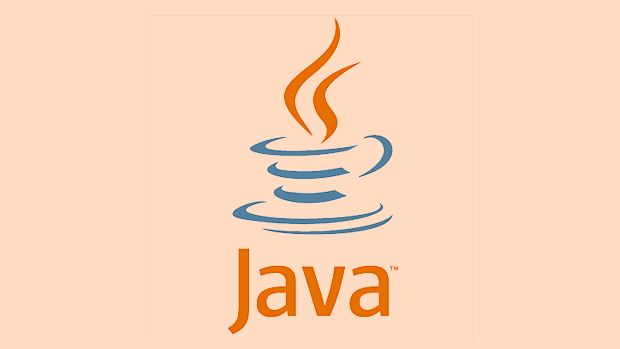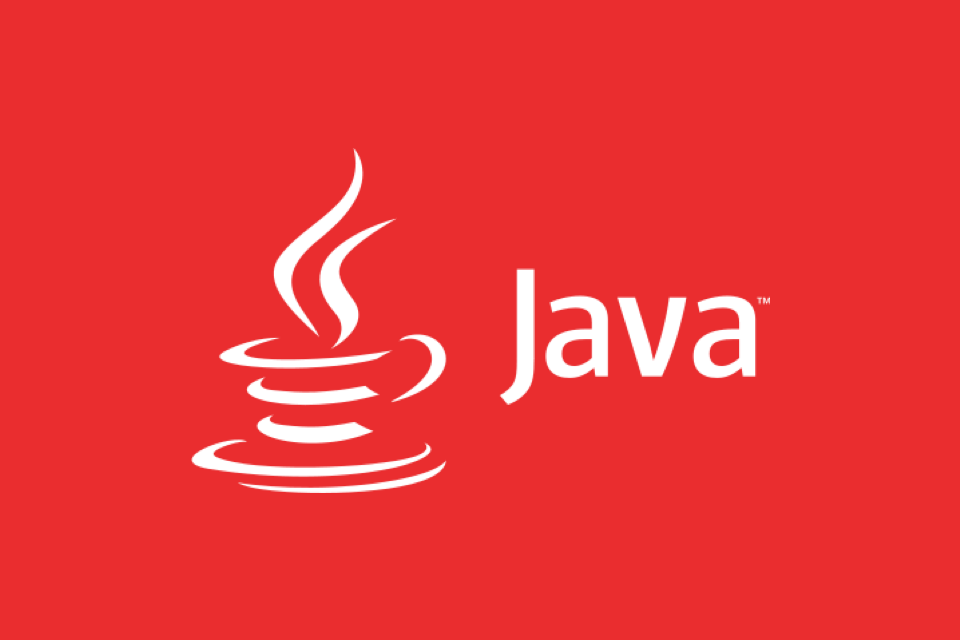Design Patterns in Modern Java for Enterprise Applications
Aug 03, 2025 am 10:16 AMDesign patterns remain essential in modern Java enterprise applications despite framework abstraction. 2. Creational patterns like Singleton (managed by Spring) and Builder (for immutability) enable controlled object creation. 3. Structural patterns such as Adapter integrate legacy systems and Proxy enables AOP for logging or security. 4. Behavioral patterns like Strategy allow runtime algorithm selection and Observer supports event-driven design via Spring events. 5. Modern trends include DI for loose coupling, factory-based bean resolution, and reactive adaptations of Template Method. Understanding these patterns helps developers write maintainable, scalable, and testable code, even when frameworks implement them under the hood, making pattern knowledge crucial for effective customization, debugging, and collaboration in enterprise environments.

Design patterns in modern Java are more relevant than ever in enterprise applications—despite the rise of frameworks and automation. While tools like Spring, Jakarta EE, and reactive libraries abstract much of the complexity, understanding design patterns helps developers write maintainable, scalable, and testable code. Here’s how classic and modern interpretations of design patterns are applied in today’s enterprise Java environments.

1. Creational Patterns: Managing Object Creation Smartly
In enterprise apps, object creation must be efficient, configurable, and loosely coupled.
Singleton (Used Sparingly)
Though often overused or misused, the Singleton pattern still has valid use cases—like managing thread pools, cache managers, or configuration loaders.

With modern Java and dependency injection (DI) frameworks like Spring, you rarely implement Singleton manually. Instead, Spring’s @Component with default singleton scope handles it:
@Component
public class AppConfig {
private Properties config;
public String getProperty(String key) {
return config.getProperty(key);
}
}Best Practice: Let the container manage lifecycle. Don’t hand-roll singletons unless you’re in a framework-free environment.
Builder Pattern (Especially with Immutable Objects)
Modern Java favors immutability (e.g., records, final fields). The Builder pattern is ideal for complex object construction.
With @Builder from Lombok:
@Builder
public class Order {
private final String orderId;
private final BigDecimal amount;
private final LocalDateTime created;
}Or manually for critical domains:
public class User {
private final String name;
private final String email;
private User(Builder builder) {
this.name = builder.name;
this.email = builder.email;
}
public static class Builder {
private String name;
private String email;
public Builder name(String name) { this.name = name; return this; }
public Builder email(String email) { this.email = email; return this; }
public User build() { return new User(this); }
}
}Useful for configuration objects, DTOs, and entities with many optional fields.
2. Structural Patterns: Building Flexible and Interoperable Systems
These help structure classes and objects to form larger, flexible systems.
Adapter Pattern (Integration Made Easy)
Common when integrating legacy systems or third-party APIs.
Example: Adapting a legacy LegacyPaymentProcessor to a modern PaymentService interface.
public interface PaymentService {
PaymentResult process(PaymentRequest request);
}
public class LegacyPaymentAdapter implements PaymentService {
private LegacyPaymentProcessor legacyProcessor;
@Override
public PaymentResult process(PaymentRequest request) {
LegacyRequest adapted = convert(request);
LegacyResponse response = legacyProcessor.send(adapted);
return convertToResult(response);
}
}Widely used in microservices when wrapping external APIs or migrating systems.
Proxy Pattern (Transparent Enhancements)
Used for lazy loading, access control, or logging.
Spring AOP and proxies:
@Aspect
@Component
public class LoggingAspect {
@Around("execution(* com.service.*.*(..))")
public Object logExecution(ProceedingJoinPoint pjp) throws Throwable {
System.out.println("Before: " pjp.getSignature());
Object result = pjp.proceed();
System.out.println("After: " pjp.getSignature());
return result;
}
}Here, Spring generates a proxy that wraps your bean—classic structural proxy in action.
3. Behavioral Patterns: Managing Object Responsibility and Communication
These govern how objects interact and delegate responsibilities.
Strategy Pattern (Runtime Algorithm Switching)
Perfect for business logic that varies by context—e.g., discount rules, shipping methods.
public interface ShippingStrategy {
BigDecimal calculate(Order order);
}
@Service
public class StandardShipping implements ShippingStrategy { ... }
@Service
public class ExpressShipping implements ShippingStrategy { ... }
@Component
public class ShippingCalculator {
private final Map<String, ShippingStrategy> strategies;
public ShippingCalculator(List<ShippingStrategy> strategyList) {
this.strategies = strategyList.stream().collect(
Collectors.toMap(this::getName, Function.identity())
);
}
public BigDecimal calculate(String type, Order order) {
return strategies.get(type).calculate(order);
}
}Spring autowires all
ShippingStrategybeans, making this clean and extensible.
Observer Pattern (Event-Driven Architecture)
Java has java.util.Observable (deprecated), but modern apps use better alternatives.
In Spring: Application Events
// Event
public class OrderCreatedEvent {
private final String orderId;
// constructor, getter
}
// Publisher
@Service
public class OrderService {
@Autowired
private ApplicationEventPublisher publisher;
public void createOrder(Order order) {
// save order
publisher.publishEvent(new OrderCreatedEvent(order.getId()));
}
}
// Listener
@Component
public class EmailNotificationListener {
@EventListener
public void handleOrderCreated(OrderCreatedEvent event) {
sendEmail(event.getOrderId());
}
}This decouples business logic from side effects—ideal for microservices and domain-driven design.
4. Modern Trends: Patterns Beyond the Classics
While GoF patterns remain foundational, modern Java enterprise development embraces higher-level architectural patterns—often implemented using design patterns under the hood.
Dependency Injection (Not a GoF Pattern, But Fundamental)
DI is now standard via Spring or CDI. It enables Inversion of Control, making testing and configuration easier.
@Service
public class UserService {
private final UserRepository repository;
public UserService(UserRepository repository) {
this.repository = repository; // Injected
}
}This promotes loose coupling and is the backbone of most modern Java apps.
Factory Pattern Spring = Smart Bean Resolution
Instead of new, use factories—often hidden behind DI.
@Component
public class ReportGeneratorFactory {
private final Map<String, ReportGenerator> generators;
public ReportGeneratorFactory(Map<String, ReportGenerator> generators) {
this.generators = generators; // Spring injects all beans of type ReportGenerator
}
public ReportGenerator getGenerator(String type) {
return generators.get(type "ReportGenerator");
}
}No if-else or switch—just naming convention and autowiring.
Template Method in Reactive Streams
Even in reactive programming (Project Reactor), you see pattern echoes.
public abstract class BaseService<T> {
public Mono<T> save(T entity) {
return validate(entity)
.then(beforeSave(entity))
.then(doSave(entity)) // abstract
.then(afterSave(entity))
.thenReturn(entity);
}
protected abstract Mono<T> doSave(T entity);
}This is Template Method adapted to non-blocking flows.
Final Thoughts
Design patterns in modern Java aren’t about rigidly applying GoF recipes—they’re about solving recurring problems with proven structures. Frameworks like Spring absorb many patterns (Singleton, Proxy, Observer, Factory), but understanding them lets you:
- Customize behavior when needed
- Debug and extend frameworks effectively
- Design clean APIs and services
- Collaborate with teams using a shared vocabulary
Bottom line: You may not write a Strategy or Observer from scratch every day, but you’re using them constantly—often through Spring. Knowing the "why" behind the magic makes you a better enterprise Java developer.
Basically, patterns haven’t disappeared—they’ve just gone undercover.
The above is the detailed content of Design Patterns in Modern Java for Enterprise Applications. For more information, please follow other related articles on the PHP Chinese website!

Hot AI Tools

Undress AI Tool
Undress images for free

Undresser.AI Undress
AI-powered app for creating realistic nude photos

AI Clothes Remover
Online AI tool for removing clothes from photos.

Clothoff.io
AI clothes remover

Video Face Swap
Swap faces in any video effortlessly with our completely free AI face swap tool!

Hot Article

Hot Tools

Notepad++7.3.1
Easy-to-use and free code editor

SublimeText3 Chinese version
Chinese version, very easy to use

Zend Studio 13.0.1
Powerful PHP integrated development environment

Dreamweaver CS6
Visual web development tools

SublimeText3 Mac version
God-level code editing software (SublimeText3)
 Asynchronous Programming Techniques in Modern Java
Jul 07, 2025 am 02:24 AM
Asynchronous Programming Techniques in Modern Java
Jul 07, 2025 am 02:24 AM
Java supports asynchronous programming including the use of CompletableFuture, responsive streams (such as ProjectReactor), and virtual threads in Java19. 1.CompletableFuture improves code readability and maintenance through chain calls, and supports task orchestration and exception handling; 2. ProjectReactor provides Mono and Flux types to implement responsive programming, with backpressure mechanism and rich operators; 3. Virtual threads reduce concurrency costs, are suitable for I/O-intensive tasks, and are lighter and easier to expand than traditional platform threads. Each method has applicable scenarios, and appropriate tools should be selected according to your needs and mixed models should be avoided to maintain simplicity
 Best Practices for Using Enums in Java
Jul 07, 2025 am 02:35 AM
Best Practices for Using Enums in Java
Jul 07, 2025 am 02:35 AM
In Java, enums are suitable for representing fixed constant sets. Best practices include: 1. Use enum to represent fixed state or options to improve type safety and readability; 2. Add properties and methods to enums to enhance flexibility, such as defining fields, constructors, helper methods, etc.; 3. Use EnumMap and EnumSet to improve performance and type safety because they are more efficient based on arrays; 4. Avoid abuse of enums, such as dynamic values, frequent changes or complex logic scenarios, which should be replaced by other methods. Correct use of enum can improve code quality and reduce errors, but you need to pay attention to its applicable boundaries.
 Understanding Java NIO and Its Advantages
Jul 08, 2025 am 02:55 AM
Understanding Java NIO and Its Advantages
Jul 08, 2025 am 02:55 AM
JavaNIO is a new IOAPI introduced by Java 1.4. 1) is aimed at buffers and channels, 2) contains Buffer, Channel and Selector core components, 3) supports non-blocking mode, and 4) handles concurrent connections more efficiently than traditional IO. Its advantages are reflected in: 1) Non-blocking IO reduces thread overhead, 2) Buffer improves data transmission efficiency, 3) Selector realizes multiplexing, and 4) Memory mapping speeds up file reading and writing. Note when using: 1) The flip/clear operation of the Buffer is easy to be confused, 2) Incomplete data needs to be processed manually without blocking, 3) Selector registration must be canceled in time, 4) NIO is not suitable for all scenarios.
 How Java ClassLoaders Work Internally
Jul 06, 2025 am 02:53 AM
How Java ClassLoaders Work Internally
Jul 06, 2025 am 02:53 AM
Java's class loading mechanism is implemented through ClassLoader, and its core workflow is divided into three stages: loading, linking and initialization. During the loading phase, ClassLoader dynamically reads the bytecode of the class and creates Class objects; links include verifying the correctness of the class, allocating memory to static variables, and parsing symbol references; initialization performs static code blocks and static variable assignments. Class loading adopts the parent delegation model, and prioritizes the parent class loader to find classes, and try Bootstrap, Extension, and ApplicationClassLoader in turn to ensure that the core class library is safe and avoids duplicate loading. Developers can customize ClassLoader, such as URLClassL
 Handling Common Java Exceptions Effectively
Jul 05, 2025 am 02:35 AM
Handling Common Java Exceptions Effectively
Jul 05, 2025 am 02:35 AM
The key to Java exception handling is to distinguish between checked and unchecked exceptions and use try-catch, finally and logging reasonably. 1. Checked exceptions such as IOException need to be forced to handle, which is suitable for expected external problems; 2. Unchecked exceptions such as NullPointerException are usually caused by program logic errors and are runtime errors; 3. When catching exceptions, they should be specific and clear to avoid general capture of Exception; 4. It is recommended to use try-with-resources to automatically close resources to reduce manual cleaning of code; 5. In exception handling, detailed information should be recorded in combination with log frameworks to facilitate later
 How does a HashMap work internally in Java?
Jul 15, 2025 am 03:10 AM
How does a HashMap work internally in Java?
Jul 15, 2025 am 03:10 AM
HashMap implements key-value pair storage through hash tables in Java, and its core lies in quickly positioning data locations. 1. First use the hashCode() method of the key to generate a hash value and convert it into an array index through bit operations; 2. Different objects may generate the same hash value, resulting in conflicts. At this time, the node is mounted in the form of a linked list. After JDK8, the linked list is too long (default length 8) and it will be converted to a red and black tree to improve efficiency; 3. When using a custom class as a key, the equals() and hashCode() methods must be rewritten; 4. HashMap dynamically expands capacity. When the number of elements exceeds the capacity and multiplies by the load factor (default 0.75), expand and rehash; 5. HashMap is not thread-safe, and Concu should be used in multithreaded
 Explained: Java Polymorphism in Object-Oriented Programming
Jul 05, 2025 am 02:52 AM
Explained: Java Polymorphism in Object-Oriented Programming
Jul 05, 2025 am 02:52 AM
Polymorphism is one of the core features of Java object-oriented programming. Its core lies in "one interface, multiple implementations". It implements a unified interface to handle the behavior of different objects through inheritance, method rewriting and upward transformation. 1. Polymorphism allows the parent class to refer to subclass objects, and the corresponding methods are called according to the actual object during runtime; 2. The implementation needs to meet the three conditions of inheritance relationship, method rewriting and upward transformation; 3. It is often used to uniformly handle different subclass objects, collection storage and framework design; 4. When used, only the methods defined by the parent class can be called. New methods added to subclasses need to be transformed downward and accessed, and pay attention to type safety.
 Effective Use of Java Enums and Best Practices
Jul 07, 2025 am 02:43 AM
Effective Use of Java Enums and Best Practices
Jul 07, 2025 am 02:43 AM
Java enumerations not only represent constants, but can also encapsulate behavior, carry data, and implement interfaces. 1. Enumeration is a class used to define fixed instances, such as week and state, which is safer than strings or integers; 2. It can carry data and methods, such as passing values ??through constructors and providing access methods; 3. It can use switch to handle different logics, with clear structure; 4. It can implement interfaces or abstract methods to make differentiated behaviors of different enumeration values; 5. Pay attention to avoid abuse, hard-code comparison, dependence on ordinal values, and reasonably naming and serialization.







